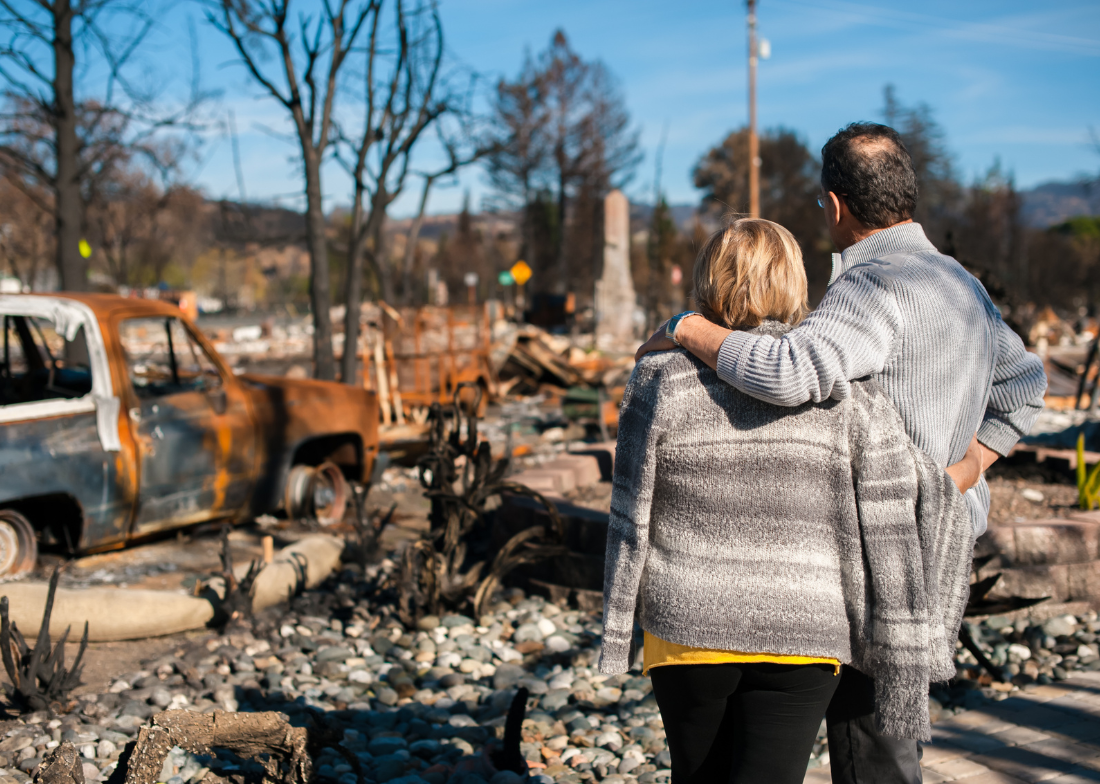Food Security and Climate Change 101
Victoria Whalen, ACE Fellow
|June 23, 2022

Access to sufficient, safe, and nutritious food is a fundamental right among all people. However, there is an ongoing crisis of food insecurity worldwide that is exacerbated by climate change. Whether it’s due to droughts drying out all the crops or extreme flooding blocking the only roads to the nearest grocery store, the intersection between climate change and food insecurity is affecting millions.
What is Food Security?
Food security is defined as all people, at all times, having physical, social, and economic access to sufficient, safe, and nutritious food that meets their food preferences and dietary needs for an active and healthy life. To achieve this, food security breaks down into four categories:
- Availability — Does the food exist in a particular place at a particular time? On a global scale, this is the most crucial factor. Under this category, world leaders must analyze whether there is enough food to feed emerging populations based on our current agriculture and food production industry.
- Access — Can people access their food needs through economic or other ways? Arguably, one of the most important factors to consider because food availability doesn’t matter without proper access. Analyzing this factor per individual is essential in understanding the intersections between accessibility and socio-cultural/gender inequalities.
- Utilization — Can people utilize the food that is available and accessible to them? Utilization focuses on the nutritional security of food production. Nutrition standards are different for every age, gender, and phase of life (like pregnancy). Social and cultural norms often dictate these standards.
- Stability — Are each of the previous pillars able to be stable over time? Food stability is defined as when a population, household, or individual has access to food at all times and does not risk losing access as a consequence of cyclical events like droughts or monsoon seasons.
Our current global food system isn’t just the agriculture industry, but rather also includes production, transport, processing, packaging, storage, retail, consumption, and loss/waste.

Food Insecurity and Climate Change
Food insecurity exists on an individual, city, state, national, continental, and global scale. The U.S. Department of Agriculture defines food insecurity as a lack of consistent access to enough food for an active, healthy life. Food insecurity and hunger are often discussed interchangeably. However, the two concepts should be distinct. Hunger is an individual-level condition of physical discomfort by the lack of food. While everyone has experienced hunger, not everyone experiences food insecurity.
Food insecurity and the hunger crisis have been critical topics of discussion amongst world leaders for centuries. However, even though global food production per capita has increased by over 30% since 1961, it is not enough. Currently, we have over 821 million undernourished people, 151 million children under five with stunted growth, 613 million women aged 15 to 49 who are iron deficient, and 2 billion adults who are overweight or obese.
Climate change is also exacerbating the global food crisis by disrupting the four pillars of food security. This is seen with climate change consequences such as increasing temperatures, changes in precipitation patterns, and more frequent and dangerous weather events. These examples can cause food production disruptions, pricing increases, and a lack of proper transport and storage.
Northern Hemisphere
Research shows that countries in the Northern Hemisphere are experiencing some positive outcomes regarding climate change and food production. Particularly in the Scandinavian region, increases in carbon dioxide in the atmosphere are shown to increase photosynthesis in plants at low warming levels resulting in increased plant production. This is known as the carbon dioxide fertilization effect, and while initially, it is beneficial, the effects are not permanent and are projected to lower the plant’s nutritional value. The carbon dioxide fertilization effect also increases the duration of perennial crops, but it also reduces the duration of vital annual crops like maize, wheat, and rice.
Southern Hemisphere
Maize, wheat, and rice are essential crops that play a key role in many diets worldwide—especially in Asian, Central or South American, and African countries. Globally, approximately 950 million metric tonnes of maize are consumed yearly, followed by wheat, with around 700 million metric tonnes consumed annually. However, due to increasing temperatures, many people in Central and South America have had to migrate north to survive. In addition, 2.2 million people are facing food insecurity in Central America’s “Dry Corridor” due to extreme droughts hindering maize production.
Countries in the Southern Hemisphere are also more prone to extreme weather cycles such as drought and monsoon seasons. These weather patterns are already devastating, and climate change makes them more unpredictable, longer, and deadlier. Tropical and coastal regions, or areas prioritizing the fishing industry, are especially vulnerable to food insecurity. Examples can be seen with sea-level rise contaminating their freshwater ecosystems and the drinking supply, monsoons and flooding washing away crops and animals, and lack of income due to unsafe working conditions.

How to Combat Food Insecurity
While solving the global food insecurity crisis might be out of your hands, combating food insecurity on an individual or community level isn’t. Listed below are a few different strategies that you can use to help your neighbor, community, or even state tackle food insecurity:
- Donate — Whether it is a monetary donation to an organization or perishable and nonperishable items, every bit counts!
- Contact your representatives — Showing support for laws and policies that actively target food insecurity can help keep more people out of unsafe situations. Food assistance programs such as the CARES Act, Supplemental Nutrition Assistance Program (SNAP), the National School Lunch Program (NSLP), and Women, Infants, and Children (WIC) are always addressing barriers to accessing healthy food in the United States. As research advances and the population grows, programs such as these will need further support for updates that match the crisis level.
- Community fridges, pantries, and gardens — Investing in outdoor fridges or pantries are a great way to help your neighborhood. Having an option for perishable and nonperishable foods can help households from any culture or background access their nutritional needs. Upkeep for fridges and pantries is simple. Since it is based on donations, just add a few extra items to your grocery list! To find a community fridge near you, use this link. Community gardens are also a great way to interact with your community, educate the younger generation about the importance of the Earth and nutrition, and offer a safe space for those struggling.
- Meal delivery — Accessibility is a significant issue regarding food insecurity. Volunteering for meal delivery services can help provide food for those unable to, whether it be due to old age, mobility issues, health issues, or just a lack of transportation.
- Support Black-operated food justice initiatives — In the United States, Black Americans are the most food-insecure group in the country, with 1 out of 4 children struggling to find food. Supporting organizations like Soil Generation or Black Urban Growers can help lower the disparities in food security.
Want to read more? Check out the ACE Blog.
Join our Youth Action Network
More Blog Posts
Driving India towards self sufficiency and freedom from oil
India can shield itself from oil-price shocks and global pressure over Russian barrels by leaning harder into two strengths it …
Read More
Unnatural, Not Unprecedented
For two weeks, residents of Southern California endured a waking nightmare. Parents raced against time – hurrying down the driveway …
Read MoreCrafting a Vision for the Future: My Experience at LCOY USA 2024
Dry and sunny Tempe, Arizona where temperatures have been over 100 F for 113 consecutive days, delegates gathered to attend …
Read More